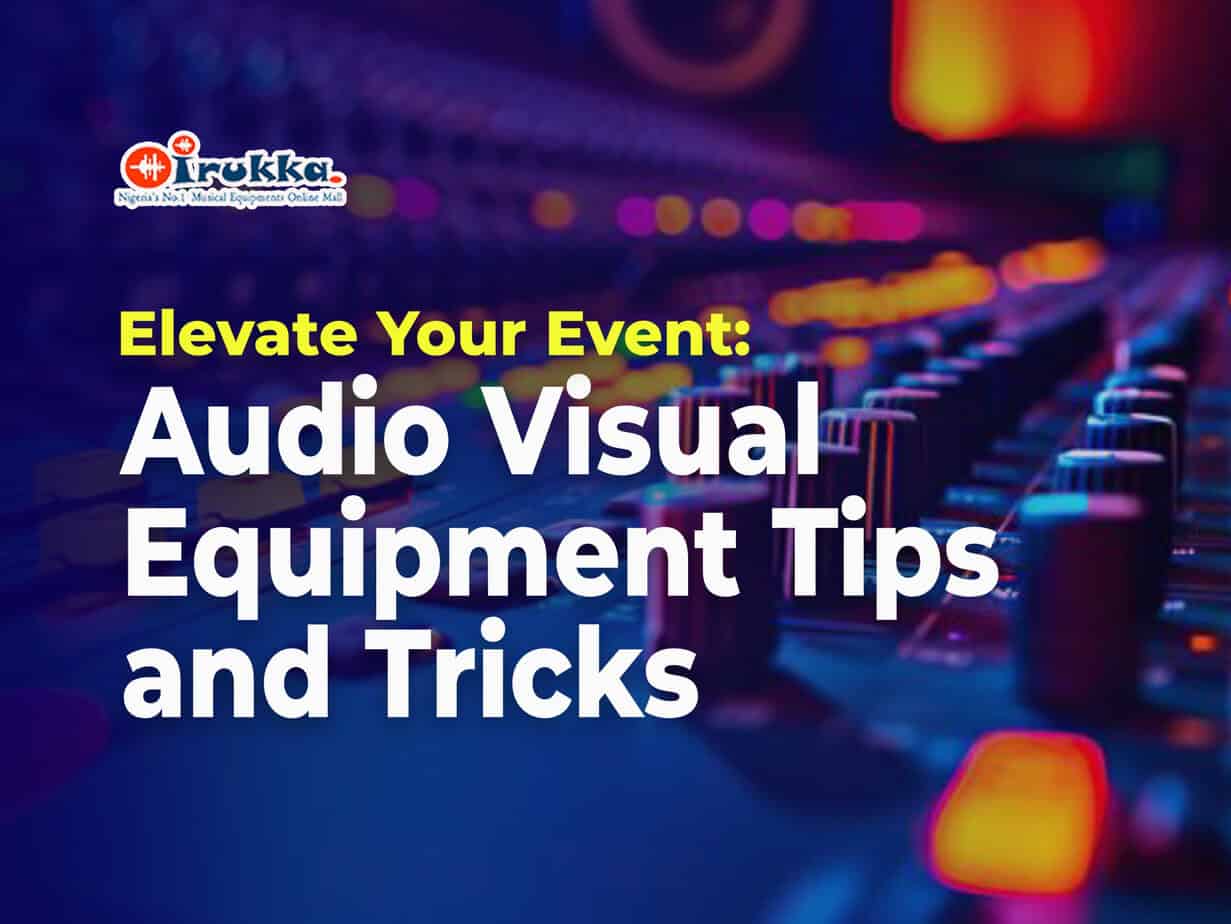Elevate Your Event: Audio Visual Equipment Tips and Tricks
Audio-visual (AV) equipment is a critical component in creating memorable events, whether it’s a corporate meeting, wedding, concert, or conference. The right AV setup can enhance the experience for your audience, ensuring clear sound, captivating visuals, and a seamless flow. In this guide, we’ll provide tips and tricks to help you select and use AV equipment effectively, ensuring your event runs smoothly and leaves a lasting impression.
1. Understand Your Event Needs:
a. Event Type: Determine the nature of your event. A corporate seminar will have different AV requirements compared to a live concert or a wedding.
b. Audience Size: Estimate the number of attendees. Larger audiences typically require more powerful equipment and larger displays.
c. Venue Layout: Consider the size, shape, and acoustics of the venue. Different venues have unique challenges and opportunities for sound and visual presentation.
2. Essential Audio Equipment:
a. Microphones:
- Wired vs. Wireless: Wireless microphones offer mobility, making them ideal for dynamic presentations and performances. Wired microphones are reliable and free from signal interference.
- Types of Microphones: Use lapel mics for speakers and handheld mics for audience interaction. Shotgun mics are great for capturing sound from a distance.
b. Speakers:
- Placement: Position speakers to cover the entire audience evenly. Avoid placing them too close to microphones to prevent feedback.
- Power: Ensure the speakers are powerful enough to cover the venue without distortion. Consider using subwoofers for added bass in larger venues or music events.
c. Mixing Console: A mixing console allows you to balance and adjust audio inputs. For larger events, a digital mixer offers more flexibility and features, such as presets and remote control capabilities.
3. Essential Visual Equipment:
a. Projectors and Screens:
- Brightness and Resolution: Choose a projector with sufficient brightness (measured in lumens) to ensure clear images even in well-lit rooms. High resolution (1080p or higher) ensures sharp visuals.
- Screen Size and Placement: Ensure the screen size is appropriate for the venue and visible to all attendees. Place the screen at a height where everyone has a clear view.
b. LED Displays: LED displays offer vibrant colors and high brightness, making them ideal for dynamic visuals and video presentations. They’re particularly useful for outdoor events due to their visibility in daylight.
c. Video Switchers: Video switchers allow you to manage multiple video sources, such as cameras and computers, seamlessly. This is crucial for events with complex visual presentations or live streaming.
4. Connectivity and Cabling:
a. High-Quality Cables: Use high-quality cables to ensure reliable signal transmission. HDMI cables are standard for video, while XLR cables are preferred for audio.
b. Cable Management: Organize and secure cables to prevent tripping hazards and signal interference. Use cable ties, covers, and mats to keep cables tidy and safe.
c. Backup Solutions: Always have backup cables, connectors, and adapters on hand. Technical issues can arise unexpectedly, and having spares can save your event from potential disruptions.
5. Lighting Tips:
a. Stage Lighting: Use a mix of spotlights, floodlights, and colored lights to highlight speakers and performers. Adjustable lighting creates a dynamic and engaging atmosphere.
b. Ambient Lighting: Ambient lighting sets the mood and enhances the overall aesthetic of the venue. Use dimmable lights and consider LED strips for creative effects.
c. Control System: A lighting control system allows you to adjust lighting levels and effects seamlessly during the event. Programmable scenes can simplify transitions and enhance the audience experience.
6. Technical Considerations:
a. Soundcheck and Rehearsal: Conduct thorough soundchecks and rehearsals to identify and resolve any technical issues. Test all microphones, speakers, and visual equipment to ensure optimal performance.
b. AV Team: If your event is large or complex, consider hiring a professional AV team. Experienced technicians can manage equipment setup, operation, and troubleshooting, allowing you to focus on other aspects of the event.
c. Power Supply: Ensure a stable power supply with sufficient outlets for all equipment. Use surge protectors to safeguard against power surges and outages.
Conclusion:
The right audio-visual equipment can elevate your event, creating an immersive and engaging experience for your audience. By understanding your event’s needs, selecting the appropriate equipment, and following these tips and tricks, you can ensure a smooth and successful event. At Irukka.com, we offer a wide range of high-quality AV equipment to help you achieve the perfect setup. Browse our selection today and take your event to the next level!







